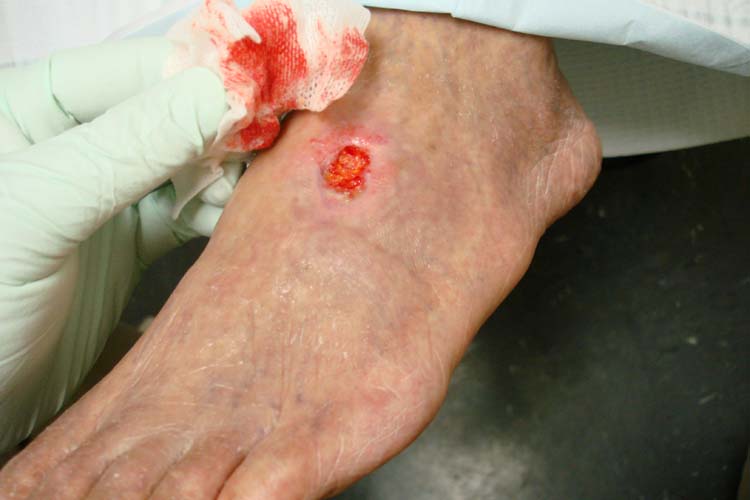Peripheral Artery Disease (PAD): Symptoms, Causes, Treatment
What are the symptoms of peripheral artery disease?
Peripheral artery disease (PAD) is a circulatory condition in which narrowed or blocked arteries restrict blood flow to the limbs, usually the legs. The symptoms of PAD can vary depending on the severity of the condition but may include:
- Pain or cramping in the legs, hips, or buttocks during physical activity (intermittent claudication)
- Numbness, weakness, or heaviness in the legs
- Coldness or discoloration of the legs or feet
- Slow-healing sores or wounds on the legs or feet
- Weak or absent pulses in the legs or feet
- Hair loss or slower hair growth on the legs
- Shiny, tight, or thin skin on the legs
- Erectile dysfunction in men
- Pain or cramping at rest (severe cases)
- Gangrene (tissue death) in the legs or feet (advanced cases)
It is important to note that some individuals with PAD may not experience any symptoms, especially in the early stages of the disease. However, as the condition progresses, symptoms may become more noticeable and impact daily activities and quality of life. If you are experiencing any of these symptoms or are at risk for PAD due to factors such as smoking, diabetes, high blood pressure, or high cholesterol, it is important to consult with a healthcare provider for evaluation and appropriate management. Early diagnosis and treatment of PAD can help prevent complications and improve outcomes.
What are the causes of peripheral artery disease?
Peripheral artery disease (PAD) is primarily caused by atherosclerosis, a condition in which fatty deposits (plaque) build up in the arteries, leading to narrowing or blockages that restrict blood flow. The major risk factors for developing PAD include:
- Smoking: Tobacco use is one of the strongest risk factors for PAD as it damages the blood vessel walls and accelerates the buildup of plaque.
- Diabetes: Individuals with diabetes are at increased risk for developing PAD due to elevated blood sugar levels that can damage blood vessels over time.
- High blood pressure: Hypertension can contribute to the development of atherosclerosis by putting excess pressure on the arterial walls, leading to damage and narrowing.
- High cholesterol: Elevated levels of LDL (bad) cholesterol can deposit plaque in the arteries, narrowing them and restricting blood flow.
- Obesity: Being overweight or obese increases the risk of developing atherosclerosis and PAD due to higher levels of inflammation and insulin resistance.
- Sedentary lifestyle: Lack of regular physical activity can contribute to poor circulation and aid in the progression of arterial disease.
- Age: PAD is more common in older adults, with the risk increasing as individuals age.
- Family history: Individuals with a family history of PAD or cardiovascular disease are at higher risk due to genetic factors.
- Other medical conditions: Other conditions such as chronic kidney disease, peripheral neuropathy, and rheumatoid arthritis can increase the risk of developing PAD.
It is important to manage and control these risk factors to help prevent or slow the progression of peripheral artery disease. Lifestyle modifications such as quitting smoking, maintaining a healthy weight, staying physically active, and managing underlying health conditions can help reduce the risk of developing PAD and improve overall cardiovascular health. If you have risk factors for PAD or are experiencing symptoms of the condition, it is important to consult with a healthcare provider for evaluation, diagnosis, and appropriate management.
What is the treatment for peripheral artery disease?
The treatment for peripheral artery disease (PAD) aims to relieve symptoms, improve blood flow, and reduce the risk of complications such as heart attack or stroke. Treatment options may vary depending on the severity of the condition and individual factors. Some common treatments for PAD include:
- Lifestyle modifications: Making healthy lifestyle changes such as quitting smoking, maintaining a healthy weight, eating a balanced diet low in saturated fats and cholesterol, and staying physically active can help improve blood flow and reduce symptoms of PAD.
- Medications: Medications such as antiplatelet agents (e.g., aspirin), cholesterol-lowering medications (e.g., statins), blood thinners, and medications to manage high blood pressure or diabetes may be prescribed to reduce the risk of blood clots, lower cholesterol levels, and improve overall cardiovascular health.
- Supervised exercise therapy: Participating in a structured exercise program, such as supervised exercise therapy or a walking regimen, can help improve symptoms of intermittent claudication, increase exercise tolerance, and improve quality of life.
- Peripheral angioplasty and stenting: In some cases, minimally invasive procedures such as angioplasty (using a balloon to widen narrowed arteries) and stenting (placing a small mesh tube to keep the artery open) may be performed to improve blood flow in blocked or narrowed arteries.
- Bypass surgery: In more severe cases of PAD, bypass surgery may be recommended to create a new pathway for blood flow around a blocked artery, typically using a vein from another part of the body.
- Wound care: For individuals with PAD-related ulcers or wounds, proper wound care, infection management, and regular monitoring are important to prevent complications and promote healing.
- Medications for symptom relief: Medications to improve symptoms, such as cilostazol (a medication that improves blood flow), may be prescribed to help alleviate leg pain and improve walking distance.
It is important for individuals with PAD to work closely with a healthcare provider, such as a vascular specialist or cardiologist, to develop a personalized treatment plan that addresses their specific needs and goals. Treatment may focus on symptom management, improving circulation, and reducing the risk of complications associated with PAD. Regular monitoring, follow-up visits, and ongoing management are essential for optimizing outcomes and maintaining cardiovascular health.




